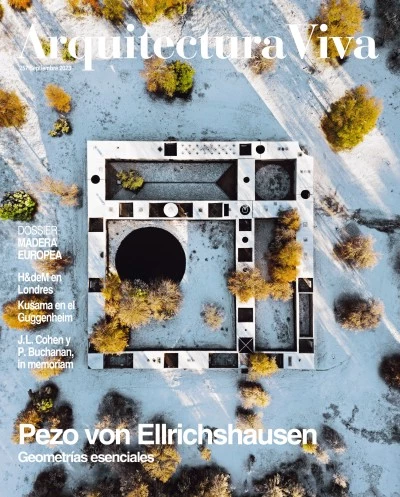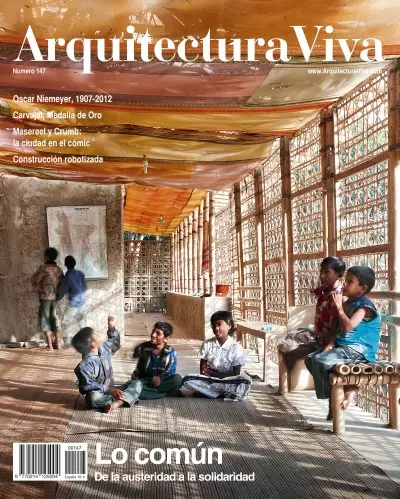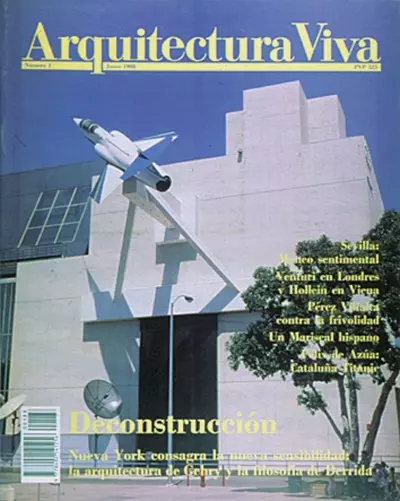
















August was more cruel than April. The suffocating heat and the fires burned up media covers, but the heart of architecture froze at the news of the death of Jean-Louis Cohen and Peter Buchanan, a Frenchman and a Briton who contributed to the discipli
The critic Peter Buchanan passed away on 23 August in London at 81 years of age. He was born in Malawi and graduated as an architect from the University of Cape Town, city where he started in the profession. In the 1970s he moved to London to work at
Last summer, The New York Times Magazine held a Zoom gathering of three architects (Toshiko Mori, Annabelle Selldorf, Vincent Van Duysen), two designers (Es Devlin, Tom Dixon), and three journalists of the newspaper (Tom Delavan, Nikil Saval, Kurt So
An ambitious exhibition at the Victoria & Albert Museum in London takes stock of the contradictory golden years of counterculture.
Born in 1952, Dietmar Eberle is the principal of Baumschlager Eberle, founded in 1985. For legal and commercial convenience the practice retains this name, even though Carlo Baumschlager moved on in 2010. As well as running what is now a group of ten
Parametricism and, in general, iconic architecture fancy themselves as being signs of the future, but in reality they are no more than the swan song of a caricaturized modernity.
Denys Lasdun, whose centenary is this year, turned his obsession for bold forms and precise construction into an ethical manifesto that is still valid today.
En los países en desarrollo, la defensa de lo común no es una postura intelectual, sino un modo de vida. Tal es el mensaje de la obra de Heringer, construida con materiales tradicionales.
Construidos como parte de un ambicioso plan urbanístico, los edificios olímpicos son tan ecológicamente sensibles como arquitectónicamente decepcionantes.
Desde su primera edición en 2000, la convocatoria de los pabellones de la Galería Serpentine constituye un singular escaparate mediático donde se funden el arte y la arquitectura.
El arquitecto Miguel Fisac, fallecido hace ahora cuatro años, protagoniza dos publicaciones recientes, ambas esperadas. Por un lado, un libro editado por Ricardo Sánchez Lampreave para el Ministerio de la Vivienda con ocasión del Premio Nacional de A
La tarea editorial emprendida en 1993 por Phaidon con la colaboración del arquitecto y crítico británico Peter Buchanan con el objeto de recoger la obra completa de Renzo Piano y su Building Workshop (RPBW) llega a su quinta entrega. El volumen comie
Few buildings excite contemporary sensibilities as deeply as does the J M Tjibaou Cultural Centre outside Nouméa, New Caledonia by the Renzo Piano Building Workshop (RPBW). It is clearly a building of our times, the product of up to the minute comput
Tras una excesiva demora, este libro presenta los edificios que se expusieron en una muestra comisariada por Peter Buchanan en Nueva York en el año 2000, y que durante cuatro años se trasladaría por diversas ciudades estadounidenses. Prologado por el
Petspective on recent architectural history might be best gained by imagining looking back from the future. Commanding attention then are not the individualistic or ephemeral but the typical and influentially innovative, whether technically, stylisti
En 1993 Phaidon publicó el primer tomo de la opera omnia de Renzo Piano, cuyo diseño se inspiraba en los que Watermark/Birkhäuser ha dedicado a la producción de Norman Foster. Aunque el crítico británico Peter Buchanan, autor de los textos y coordina
«Desde la jungla tropical, el exuberante jardín o la avenida en sombra, el espacio penetra con soltura y atraviesa ondulante el típico edificio de Óscar Niemeyer. Deslizándose sereno a lo largo de las curvas resbaladizas de lisa y fresca cerámica, el
Amsterdam is a city of still water (its harbour linked to the sea by canal), while the waters of Rotterdam go in and out with the tide.” This is how the Dutch explain the differences between their first and second largest cities. Both cities are part
From Brutalism to Neo-Rationalism, and passing through High-Tech, Contextualism and Postmodernism, James Stirling’s influence on recent architectural history is an indisputable fact. Peter Buchanan points out these influences to us in a run-through o
Renzo Piano could be categorized as an architect of a culture of tension, though his buildings are not to be strictly temporary, despite their modern materials. Tight tension (as in his early GRP and steel roofs in Genoa, or those of Schlumberger in
Para Rafael Moneo, el arquitecto debería ser, además de creador, guardián y conocedor de la cultura; sin raíces en el pasado es imposible formalizar un futuro firmemente cimentado o una cultura lo suficientemente sustancial como para soportar una vid

